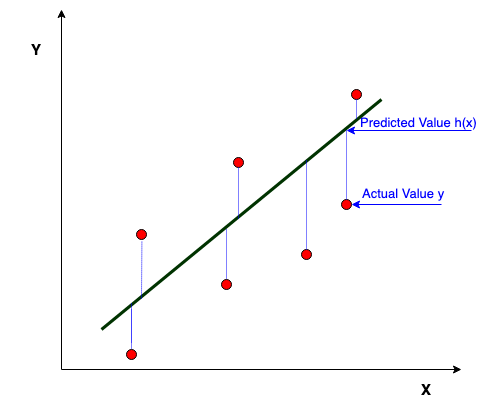- Help Center
- Machine Learning
- Supervised
-
Data Science Bootcamp
-
Large Language Models Bootcamp
-
Agentic AI Bootcamp
-
Registration
-
Pricing
-
Community
-
Python Programming
-
Platform Related Issues
-
Bootcamps
-
Homework and Notebooks
-
Free Courses
-
Data Science for Business
-
Practicum
-
Blog
-
Employment Assistance
-
Machine Learning
-
Data Analysis
-
R Language
-
Python for Data Science
-
SQL
-
Introduction to Power BI
-
Power BI
-
Programming and Tools
-
Partnerships
What is Root Mean Squared Error (RMSE)?
- Root Mean square error is the standard deviation of the residuals. Now let’s understand what Standard deviation and residuals are.
Standard deviation: Standard deviation is a measure of how spread out numbers are. Its formula is the square root of the Variance. Variance is defined as the average of the squared differences from the Mean. In the below formula of standard deviation ‘xi’= numbers, ‘μ’= Mean of the numbers and ‘N’ = Total number of values
Residuals: Residuals are a measure of how far from the regression line data points are. Residuals are nothing but prediction errors, we can find them by subtracting the predicted value from an actual value

So in order to get RMSE, we will use the Standard deviation formula but instead of the square root of variance we will calculate the square root of the average of squared residuals
-
Standard deviation is used to measure the spread of data around the mean, while RMSE is used to measure the distance between predicted and actual values.
-
RMSE is a measure of how to spread out these residuals are. In other words, it tells you how concentrated the data is around the line of best fit.
-
Since the errors are squared before they are averaged, the RMSE gives a relatively high weight to large errors. This means the RMSE is most useful when large errors are particularly undesirable
What does RMSE indicate?
- It indicates the absolute fit of the model to the data.
- Provides average model prediction error in units of the variable of interest.
- They are negatively-oriented scores, which means lower values are better.
